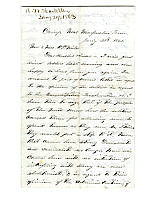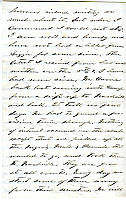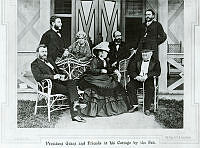Side Chair, Cabinet Room, White House Collection
This Gothic Revival black walnut side chair by J. and J.W. Meeks of New York was one of 24 made for the Cabinet Room and used there from 1847-1869. These chairs appear in prints of Lincoln's Cabinet Room and came to be identified with him. Until the construction of the West Wing in 1902, the Cabinet Room was on the east end of the second floor of the Executive Mansion.
























